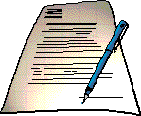
Requirements Definition
What is the Requirements Definition;

The Requirements Definition is a fundamental document for all parties.
While this document may only be one of a number depending on the size of the
project it represents the clients requirements based on meeting's discussions,
the scope of the project, strategic directions and many other input factures.

All the collected information including the historic and current situation are documented to
build an over all picture. The requirements are then added along with
the overall process, and methodology by which the deliverables will meet.
Depending on the size of the project key factors, such as scope, management,
requirements, pilot or proto-type, risk, acceptance, training, implementation
and support may form part of one or many documents.
Why do I need a Requirements Definition
Cant I just get a quote and then proceed ?
In short yes you can, no one is going to suggest you need all of the above
to purchase some hardware or software. But the bigger the project and the more
complex, the more important these become. It is especially important if you
building or designing something, and utilizing other resources, who may not be
able to read your mind or know company idiosyncrasies. You may simply need a
means to get to a solution, and the best way to achieve a business solution is
to define the current situation where it fails, what you expect, what's in the
future, then develop a method of getting there.
Listed below
are some key headings of a requirements definition. To those who are perhaps more
experience you may recognize items are missing, because these would typically be
included in other documents, whether they be Project Plans, Implementation Plans
or Acceptance plans.
Document Purpose,
-
Intended Audience,
-
Terms of Reference,
Executive Summary,
Current Situation,
-
Context Diagrams,
-
Business Environment,
-
System Environment,
Business Requirements,
Systems Requirements
Documentation
Implementation
Training
Support
What will an excellent Project Manager do for you

An excellent Project Manager will make this process as
seamless and as cost effective as possible, and ensure it does not become an
overhead or a revenue generation scheme with little client benefit. As an
excellent Project Manager you would expect the level of documentation, and
management of this process would be proportional the overall cost of the
project.
The content of the document should provide the full picture
for the targeted audience and an overview for management. It should cover all
the necessary technical information to such a level that it can not be
misconstrued, and yet can be clearly understood by its targeted audience.
It should not include poetic licence from marketing or sales,
vagaries, questions, technical information which is not clearly required, or
postulate alternatives.
It should reference or include the required scope and
resources responsibilities, such that it is clear who is doing what and where
there are overlaps or multiple organizations ensure there are no gaps in
service, leading to scope creep, added costs, and project risks
The document should reference or include the deliverables and
expected payment requirements.
Risk and contingency must be accounted for, and the key
element is in assessment of risk, and cost of contingencies.
The document must be reviewed by all parties and modified
until such time as it correct ly
and accurately reflects the requirements, where by all parties should then sign the
document.
ly
and accurately reflects the requirements, where by all parties should then sign the
document.
13/05/2002 04:39:08 PM




 ly
and accurately reflects the requirements, where by all parties should then sign the
document.
ly
and accurately reflects the requirements, where by all parties should then sign the
document.